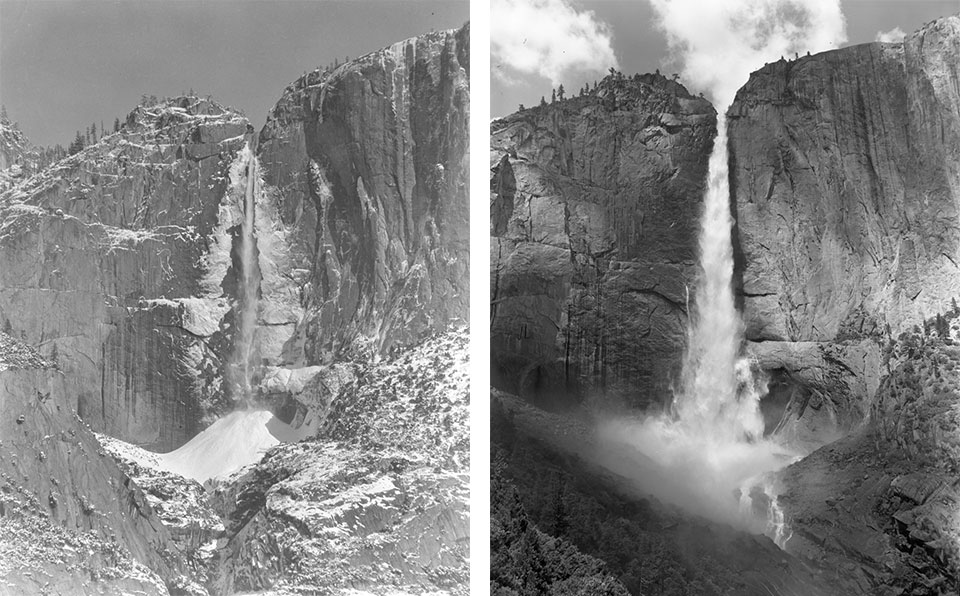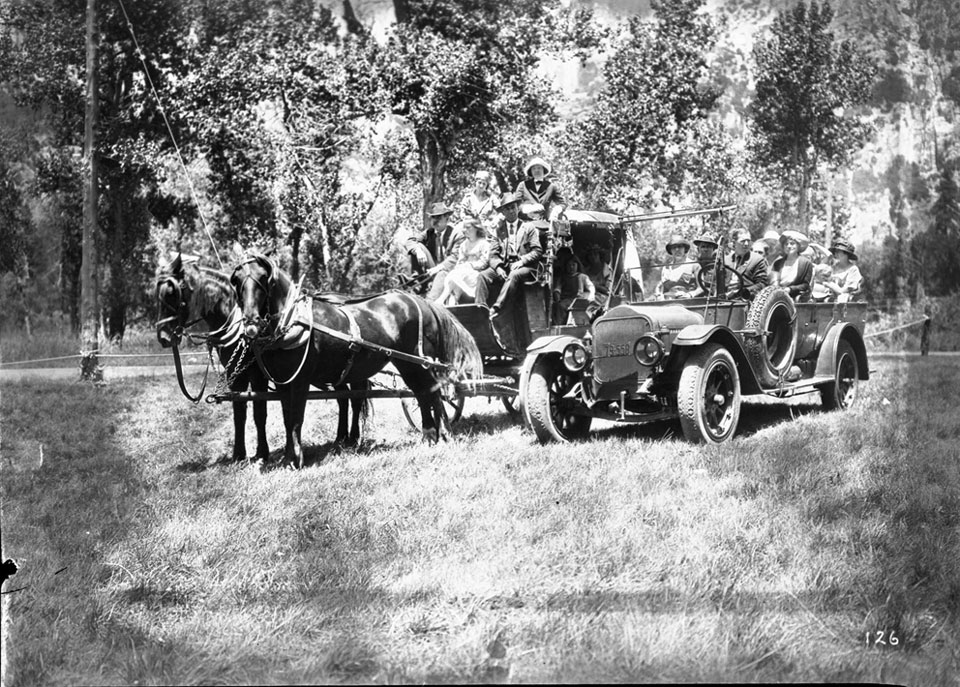The National Park Service mission aims to “preserve unimpaired the natural and cultural resources and values of the National Park System for the enjoyment, education, and inspiration of this and future generations.” The use of the phrase “preserve unimpaired” can lead one to believe that parks are maintained in such a way that they never change. In working with the historic photograph collection at Yosemite, however, the dynamic nature of the park has become apparent to me. The park exists in a constant state of ebb and flow with seasonal variations and larger generational shifts in visitor use.
Each season in Yosemite produces a new landscape: winter brings snow and ice, autumn changes the colors of the trees, spring entices bears out of hibernation, and summer causes an explosion of wildflowers. Visitors engage with the park differently based on the state of the natural environment, and experiences vary drastically despite being in the same location. The images below contrast the aesthetic of Yosemite Falls from winter to summer, and it is easy to imagine how visitors on each of these days could have a different appreciation for the park.

Photographs from the archives also demonstrate how cultural changes have shifted patterns of visitor use through developments in things like fashion and transportation technology.

The women in this photograph are seated near Clark Point in fashionable attire from the 1940s. Both are wearing knit sweaters and carrying handbags, which is quite different from what you would see someone wearing today after hiking two miles uphill to this viewpoint. This may seem like a small detail, but it is indicative of a cultural shift in how individuals engage with the outdoors. Over the last hundred years, fashions have changed, and women have gained the freedom to wear more comfortable clothing, such as backpacks and t-shirts, that are more appropriate for the outdoor activities in which they participate.

Developments in transportation have also changed how individuals navigate the park. Photographs show the transition from using stages to railroads to automobiles to make Yosemite accessible to visitors. The amount of time required to travel to, and within the park, changed with these advancements; therefore, it became much easier and more comfortable to see Yosemite. Imagine how different it must have been to ride through Yosemite Valley in a horse-drawn stage in 1880 compared to an air-conditioned automobile in 1980.
Theodore Roosevelt famously remarked that “our people should see to it that they [public lands] are preserved for their children and their children’s children forever, with their majestic beauty all unmarred.” The National Park Service has ensured that the grandeur of Yosemite will never cease to awe and inspire its visitors, but it is essential to acknowledge that preservation does not make the landscape static. The natural environment is always changing, and every person experiences a different Yosemite.
